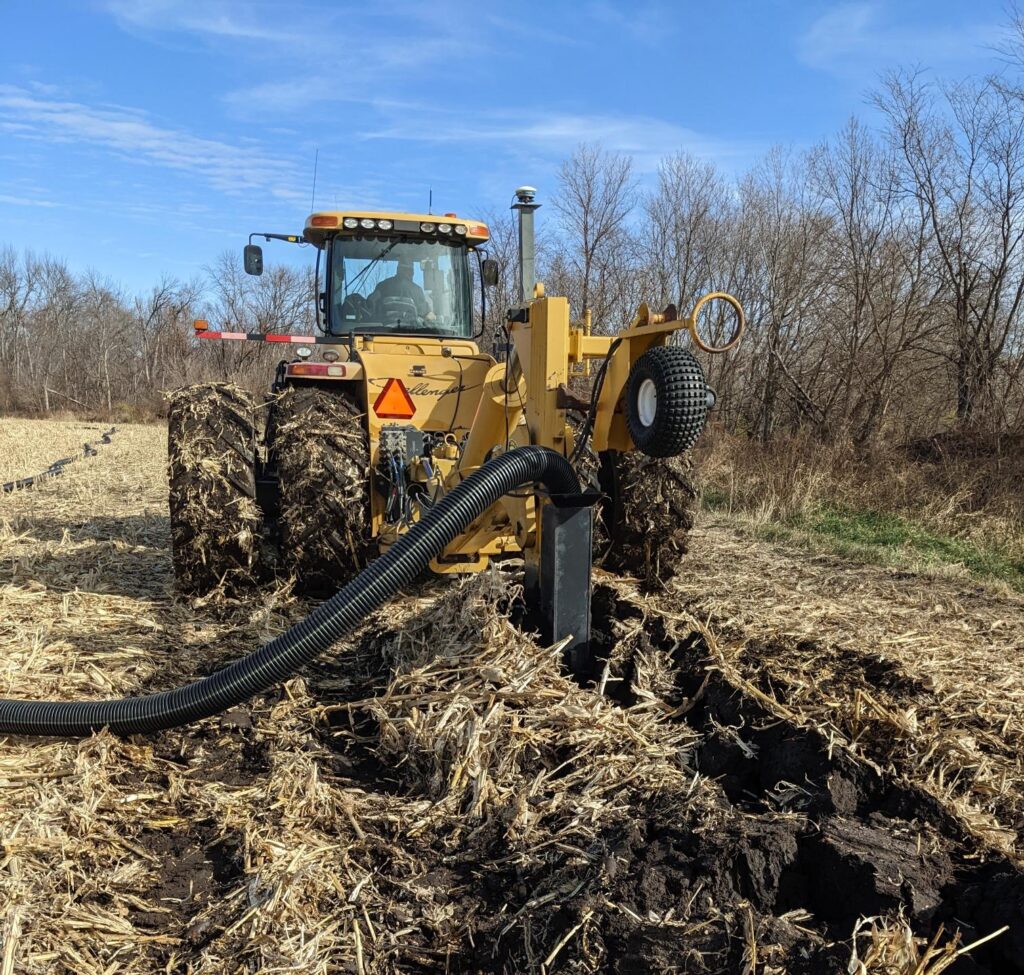
The Natural Resources Conservation Service (NRCS) recently announced its updated Climate Smart Agriculture and Forestry mitigation activities for fiscal year 2025 (FY25). Practices on the list are eligible for financial assistance through the record setting Inflation Reduction Act (IRA) funding pool. IRA funding adds nearly 20 billion dollars to various NRCS financial assistance programs including the Environmental Quality Incentives Program (EQIP), Regional Conservation Partnership Program (RCPP), Conservation Stewardship Program (CSP), and Agricultural Conservation Easement Program (ACEP).
ADMC and its partners have been working diligently to provide the data needed for NRCS to include water management practices such as Drainage Water Management (Conservation Practice Standard 554), Saturated Buffers (CPS 604), and Denitrifying Bioreactors (CPS 605) on the CSAF list. That diligence is starting to pay off as Drainage Water Management, Saturated Buffer, and Wetland Restoration (CPS 657) are now eligible as CSAF practices. Like many CSAF practices there are specific scenarios for these practices to be considered for the CSAF IRA funding.
Drainage Water Management is eligible when it occurs on soils classified as organic (Histosols) and is placed with an existing drainage system. Histosols are the soils that are often referred to as muck, peat, bog, or marsh soils. Organic soils are not widespread in agriculture like mineral soils, but there are examples like the Houghton series found in states like Minnesota, Wisconsin, and Michigan or the Histic Hapludolls in the agricultural area of the Everglades.
Saturated Buffers are now eligible if the perennial vegetation of the saturated buffer replaces an area of currently cultivated cropland. If the saturated buffer is a modification of an existing grass filter strip, it would not qualify for IRA funding, but it is still eligible through the traditional EQIP or RCPP programs.
The Wetland Restoration practice is only included as a CSAF practice the restoration occurs on a histosol wetland.
If you are interested in these practices, but do not have the specific scenario to qualify as a CSAF practice, you can consider combining the water management practice with other approved CSAF practices and if the water management practice acts as a facilitating or companion practice. Showing how the water management practice enhances another applied CSAF, would make the water management practice eligible for the additional IRA funding under many more scenarios. If you are only interested in the water management practice and do not have a scenario that qualifies it as a CSAF practice, you can always apply through the traditional EQIP or RCPP competitive funding pools.
Interested farmers and landowners should discuss the possibility of these practices for their farm with the local county NRCS office. NRCS takes applications any time, but they do have batching dates where current applications are ranked and selected for the current funding cycle. The next batching dates have not been announced, but often occur in February or March. If you have any questions, please contact ADMC by emailing Keegan Kult at kkult@admcoalition.com.
